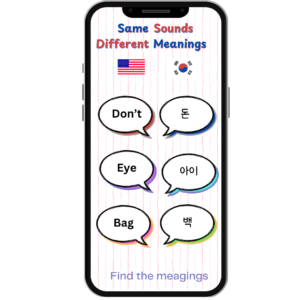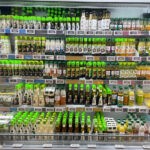When I moved back to Korea, even as a Korean, I found myself unsure of where to shop because supermarkets have been changed a lot. For newcomers and those unfamiliar with the local market landscape, navigating the different types of supermarkets can be challenging. This comparison table aims to help you understand the various supermarkets and market types in Korea, how they differ from those in America, and where to find what you need.
| Market | Korea | America | Note |
| Nationwide Supermarkets | emart, HomePlus, LotteMart, Mega Mart | Walmart, Kroger | emart and HomePlus are like Walmart, while LotteMart offers a variety of groceries and household goods. Kroger focuses on groceries. |
| Budget Supermarkets | No Brand, Hanaro Mart, HomePlus Express | ALDI, Food Depot | No Brand is a budget store similar to ALDI. Hanaro Mart is government-supported, focusing on affordable produce and essentials. |
| Local Supermarkets | Nonghyup Mart, Top Mart, GS Supermarket, Numerous local brands(many of which are located nearby) | Publix, Safeway, H-E-B, etc. | Nonghyup Mart is a farmers’ co-op; GS Supermarket is a convenience-focused local chain, similar to Publix and H-E-B in size and focus on community. |
| Membership Store | Costco*, Traders | Costco, Sam’s Club | Membership stores are similar in both countries. Korean membership is cheaper, and foreigners can register with a passport. |
| Convenience Store | GS25, emart24, 7-Eleven, CU | 24hr Gas Station convenience stores | Korean convenience stores are like 7-Eleven, offering snacks, meals, and basic items. In the U.S., similar items are found in 24-hour gas station stores. |
| Department Store | Shinsegae, Hyundai, Lotte | N/A | Korean department stores often have high-end grocery stores in their basement, offering premium groceries and fresh food, unlike typical U.S. department stores. |
| Traditional Market(재래시장) | Traditional market (ex: Namdaemun Market, Gwangjang Market), 5-day Market | N/A | Traditional markets in Korea sell fresh produce, street food, and crafts. Similar markets don’t have a direct equivalent in the U.S. 5-day markets are held once every five days and are often held in rural areas. |
| Mart comparison in Fresh vegetable and fruits | Food Material Marts(식자재) : Food Material Marts in Korea are for wholesale bulk ingredients, used by restaurants but also sell items to customers. |
Farmer’s Markets : Farmer’s Markets in the U.S. focus on fresh, local, and organic products sold by farmers directly to consumers. |
|
| Online Market | Coupang, Market Kurly | Amazon | Coupang is Korea’s version of Amazon, offering fast delivery. Market Kurly specializes in premium groceries and fresh food delivery. |
The shopping experience in Korea differs significantly from the U.S. in terms of product variety, store size, and cultural habits. Korean markets focus more on fresh, everyday essentials with smaller stores and fewer international or specialty products. American supermarkets, on the other hand, offer a much wider variety of items, larger stores, and more space for niche or dietary-specific products. Understanding these differences can help Americans appreciate the unique aspects of shopping in Korea and why the products available might seem more limited by comparison.








